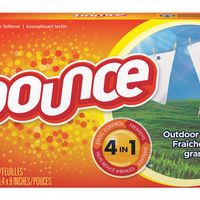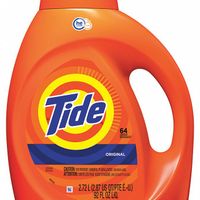Call +(254) 703 030 000 / 751 483 999 / 721 704 777
- Home
- Cleaning And Janitorial
- Cleaning Chemicals
- Laundry Fabric Care
.....Read More
Frequently Asked Questions
What is the best laundry detergent for removing tough stains?
Tide Original is often considered the best laundry detergent for removing tough stains. It contains a high concentration of surfactants and enzymes that effectively break down and remove various types of stains, including grease, oil, and protein-based stains like blood or sweat. Tide's formula is designed to work well in both high-efficiency and standard washing machines, ensuring versatility and effectiveness across different laundry setups.
Another strong contender is Persil ProClean Stain Fighter. Known for its powerful stain-fighting capabilities, Persil contains a unique blend of enzymes and surfactants that target and lift stubborn stains. It is particularly effective on grass, mud, and food stains, making it a favorite among households with active lifestyles or children.
For those seeking an eco-friendly option, Seventh Generation Free & Clear is a plant-based detergent that is free from dyes and artificial fragrances. Despite its gentle formulation, it is surprisingly effective at tackling tough stains, thanks to its enzyme-rich formula. It is a suitable choice for individuals with sensitive skin or those looking to minimize their environmental impact.
OxiClean White Revive is another excellent option, especially for white fabrics. It combines the power of oxygen bleach with detergent to remove stains and brighten whites without the harshness of chlorine bleach. It is particularly effective on coffee, wine, and ink stains.
Ultimately, the best detergent may vary based on personal preferences, specific stain types, and fabric considerations. However, Tide Original, Persil ProClean Stain Fighter, Seventh Generation Free & Clear, and OxiClean White Revive are consistently recommended for their superior stain-removing capabilities.
How do fabric softeners work, and are they necessary?
Fabric softeners work by depositing a thin layer of chemical compounds, typically cationic surfactants, onto the surface of fabrics during the rinse cycle of washing. These compounds have a positive charge, which allows them to adhere to the negatively charged fibers of the fabric. This coating reduces static electricity, making clothes feel softer and easier to iron. It also helps to reduce friction between fibers, which can minimize wear and tear, and imparts a pleasant fragrance to the laundry.
Fabric softeners can be beneficial for certain types of fabrics, such as cotton and linen, which can become stiff after washing. They are particularly useful for towels, bed linens, and clothes that are prone to static cling, like synthetic fibers.
However, fabric softeners are not necessary for all laundry. They can reduce the absorbency of towels and affect the moisture-wicking properties of athletic wear. Additionally, some people may experience skin irritation or allergic reactions to the chemicals and fragrances used in fabric softeners. Environmental concerns also arise, as the chemicals can contribute to water pollution and are not always biodegradable.
In summary, while fabric softeners can enhance the feel and manageability of certain fabrics, they are not essential for all laundry loads. Their use depends on personal preference, the type of fabric being washed, and considerations regarding skin sensitivity and environmental impact.
What is the difference between liquid and powder laundry detergent?
Liquid laundry detergent is pre-dissolved and typically more effective on greasy or oily stains. It can be used for pre-treating stains directly on clothes and works well in cold water, making it energy-efficient. Liquid detergents are also less likely to leave residue on clothes and washing machines.
Powder laundry detergent is often more cost-effective and has a longer shelf life. It is particularly effective on ground-in dirt and mud stains. However, it may not dissolve completely in cold water, potentially leaving residue on clothes and in the washing machine. Powder detergents usually come in cardboard boxes, which are more environmentally friendly than plastic bottles used for liquids.
In summary, liquid detergents are better for greasy stains and cold water washing, while powder detergents are more economical and effective on dirt stains.
How can I remove stubborn odors from my laundry?
To remove stubborn odors from laundry, start by identifying the source of the smell, such as sweat, mildew, or smoke. Pre-treat the affected areas with a mixture of baking soda and water or a specialized enzyme-based stain remover. For the wash cycle, use hot water if the fabric allows, as heat can help break down odor-causing bacteria. Add a cup of white vinegar or baking soda to the wash, as both are natural deodorizers. You can also use a laundry booster like borax or oxygen bleach for extra odor-fighting power.
Choose a high-quality detergent designed for odor removal, and consider adding a few drops of essential oils like lavender or tea tree for a fresh scent. Avoid overloading the washing machine to ensure clothes are thoroughly cleaned and rinsed. After washing, check if the odor persists; if so, repeat the process or soak the clothes in a vinegar-water solution for 30 minutes before rewashing.
Dry clothes immediately after washing to prevent mildew. Use the sun’s natural deodorizing power by line-drying outdoors, or add wool dryer balls with a few drops of essential oil to the dryer. Regularly clean your washing machine by running an empty cycle with hot water and vinegar or a commercial washing machine cleaner to prevent odor buildup.
For persistent odors, consider using a fabric refresher spray or odor-eliminating product specifically designed for textiles. Store clothes in a well-ventilated area to prevent future odor issues. Regular maintenance and prompt attention to odors can keep your laundry smelling fresh.
What are the benefits of using a washing machine cleaner?
Using a washing machine cleaner offers several benefits that enhance the performance and longevity of your appliance. Firstly, it effectively removes detergent residues, dirt, and grime that accumulate over time, preventing unpleasant odors and ensuring your clothes come out smelling fresh. This buildup can also lead to mold and mildew growth, which a cleaner can help eliminate, maintaining a hygienic environment inside the machine.
Secondly, regular use of a washing machine cleaner can improve the efficiency of the appliance. By clearing out residues and deposits, the cleaner ensures that water flows freely and the machine operates at optimal performance, potentially reducing energy consumption and lowering utility bills.
Additionally, a cleaner can help prevent mechanical issues. Residues and mineral deposits can cause wear and tear on the machine's components, leading to breakdowns or costly repairs. By keeping the machine clean, you reduce the risk of such problems, extending the lifespan of the appliance.
Moreover, using a washing machine cleaner is convenient and time-saving. It simplifies maintenance, requiring minimal effort compared to manual cleaning methods. Most cleaners are designed for easy use, often involving just running a cycle with the cleaner added.
Finally, a cleaner can enhance the effectiveness of your laundry detergent. By removing residues that interfere with detergent performance, it ensures that your clothes are thoroughly cleaned, maintaining their quality and appearance.
In summary, a washing machine cleaner offers benefits such as odor elimination, improved efficiency, prevention of mechanical issues, convenience, and enhanced detergent performance, all contributing to a better laundry experience and prolonged appliance life.
How do I choose the right bleach for my laundry?
To choose the right bleach for your laundry, consider the following factors:
1. **Fabric Type**: Check the care label on your clothing. Chlorine bleach is suitable for whites and colorfast fabrics, while oxygen bleach is safer for colored and delicate fabrics.
2. **Colorfastness**: Perform a patch test on colored garments to ensure they won't fade. Oxygen bleach is generally safer for colors.
3. **Stain Type**: Chlorine bleach is effective for removing tough stains like mold and mildew, while oxygen bleach works well on organic stains like food and sweat.
4. **Water Temperature**: Chlorine bleach works best in hot water, whereas oxygen bleach is effective in both hot and cold water.
5. **Environmental Impact**: Oxygen bleach is more environmentally friendly as it breaks down into natural components, while chlorine bleach can release harmful chemicals.
6. **Allergies and Sensitivities**: If you have sensitive skin or allergies, opt for oxygen bleach, which is less likely to cause irritation.
7. **Product Form**: Bleach is available in liquid, powder, and tablet forms. Liquid bleach is easy to use, while powder and tablets are convenient for precise dosing.
8. **Brand and Price**: Choose a reputable brand that fits your budget. Read reviews and compare products to ensure quality.
9. **Usage Instructions**: Follow the manufacturer's instructions for dilution and application to avoid damage to fabrics.
10. **Storage and Safety**: Store bleach in a cool, dry place away from children and pets. Ensure proper ventilation when using bleach to avoid inhaling fumes.
By considering these factors, you can select the appropriate bleach for your laundry needs, ensuring effective cleaning while preserving the integrity of your fabrics.
What are the best practices for using fabric stain removers effectively?
1. **Read Labels**: Always check the care label on the fabric and the instructions on the stain remover to ensure compatibility.
2. **Test First**: Perform a patch test on an inconspicuous area to ensure the stain remover doesn’t damage or discolor the fabric.
3. **Act Quickly**: Treat stains as soon as possible to prevent them from setting. Fresh stains are easier to remove.
4. **Blot, Don’t Rub**: Gently blot the stain with a clean cloth to absorb excess liquid. Rubbing can spread the stain and damage fibers.
5. **Use Cold Water**: For most stains, especially protein-based ones like blood, use cold water to prevent setting.
6. **Apply Correctly**: Follow the product instructions for application. Some removers need to be applied directly, while others may require dilution.
7. **Allow Time**: Let the stain remover sit for the recommended time to break down the stain effectively.
8. **Rinse Thoroughly**: After treatment, rinse the fabric thoroughly to remove any residue, which can attract dirt.
9. **Repeat if Necessary**: Some stains may require multiple treatments. Be patient and repeat the process if needed.
10. **Avoid Heat**: Do not use heat (like a dryer) until the stain is completely gone, as heat can set the stain permanently.
11. **Use Appropriate Products**: Choose a stain remover suitable for the type of stain (e.g., enzyme-based for organic stains, solvent-based for grease).
12. **Protect Surrounding Areas**: When applying stain remover, protect the surrounding fabric to prevent spreading.
13. **Wash After Treatment**: Once the stain is removed, wash the fabric as usual to ensure all residues are eliminated.
14. **Store Properly**: Keep stain removers in a cool, dry place to maintain their effectiveness.



